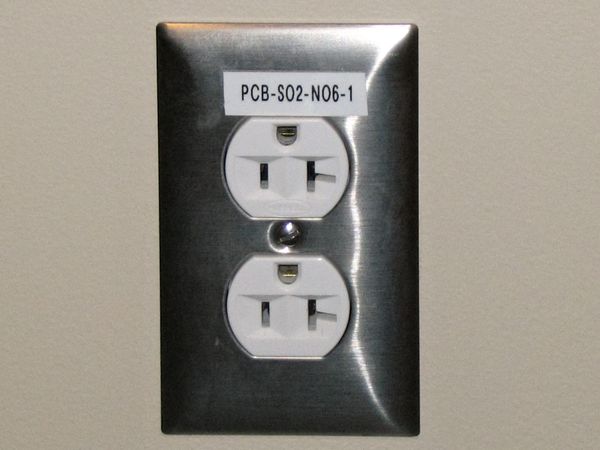Wiring typical laundry circuit
It is commonplace for homes today to have three different circuits supplying the laundry room. The first is a 20-amp circuit to supply the 120-volt power for the washing machine. The second is a 30-amp dedicated circuit for running an electric dryer. The third is a standard 15-amp lighting circuit that likely supplies light fixtures in other rooms as well as the laundry area.
Washer Receptacle
The 120-volt, 20-amp circuit supplies a receptacle for the washing machine.
It is typically wired with 12-gauge, 2-wire cable containing a hot wire, a neutral wire, and a ground wire. The receptacle is a standard 20-amp receptacle. What's special about this circuit is that it is a designated circuit, not to be confused with a dedicated circuit. While a dedicated circuit supplies only one appliance, a designated circuit is intended for a single use, not a single appliance. The use in this case is laundry, and you can plug both a washer and a gas dryer into the same receptacle. Of course, if you're set up for a gas dryer, you won't need the 240-volt dryer receptacle we'll discuss next.
Dryer Receptacle
Electric dryers run on both 240-volt and 120-volt power. The 240V is for the dryer's heating element. The 120V is for the timer, clock, buzzer, and other bells and whistles. If you buy an electric dryer today, it will require a special appliance cord with a 4-prong plug.
This plug must be used with a 120/240V receptacle. And that's our next laundry room circuit. This receptacle is typically supplied by a 10-gauge, 3-wire cable with two hot wires, a neutral wire, and a ground wire. The circuit is protected by a 30-amp circuit breaker. Older dryers typically had 3-prong cords that fit only 3-slot receptacles.
Installing these is no longer allowed by the National Electrical Code (NEC).
Lighting Circuit
A laundry room would be pretty hard to use without a circuit for lighting. As mentioned, light fixtures in laundry rooms are likely to be on the same circuit as the lighting for an adjacent room or hallway. Standard lighting circuits are 15-amp circuits and often include general-use receptacles as well.
Installation Options
When laundry rooms are finished with drywall or other finish material, receptacles typically are installed in the normal fashion, with the electrical boxes recessed into the wall and with NM cable running to the boxes. Alternatively, laundry rooms in basements or garages may have concrete, concrete block, or unfinished framed walls, in which cases the electrical boxes may be surface-mounted. This calls for metal boxes and wiring running through metal (typically EMT) conduit. Instead of NM cable, the installer can use individual THHN insulated wires.




Comments
Post a Comment